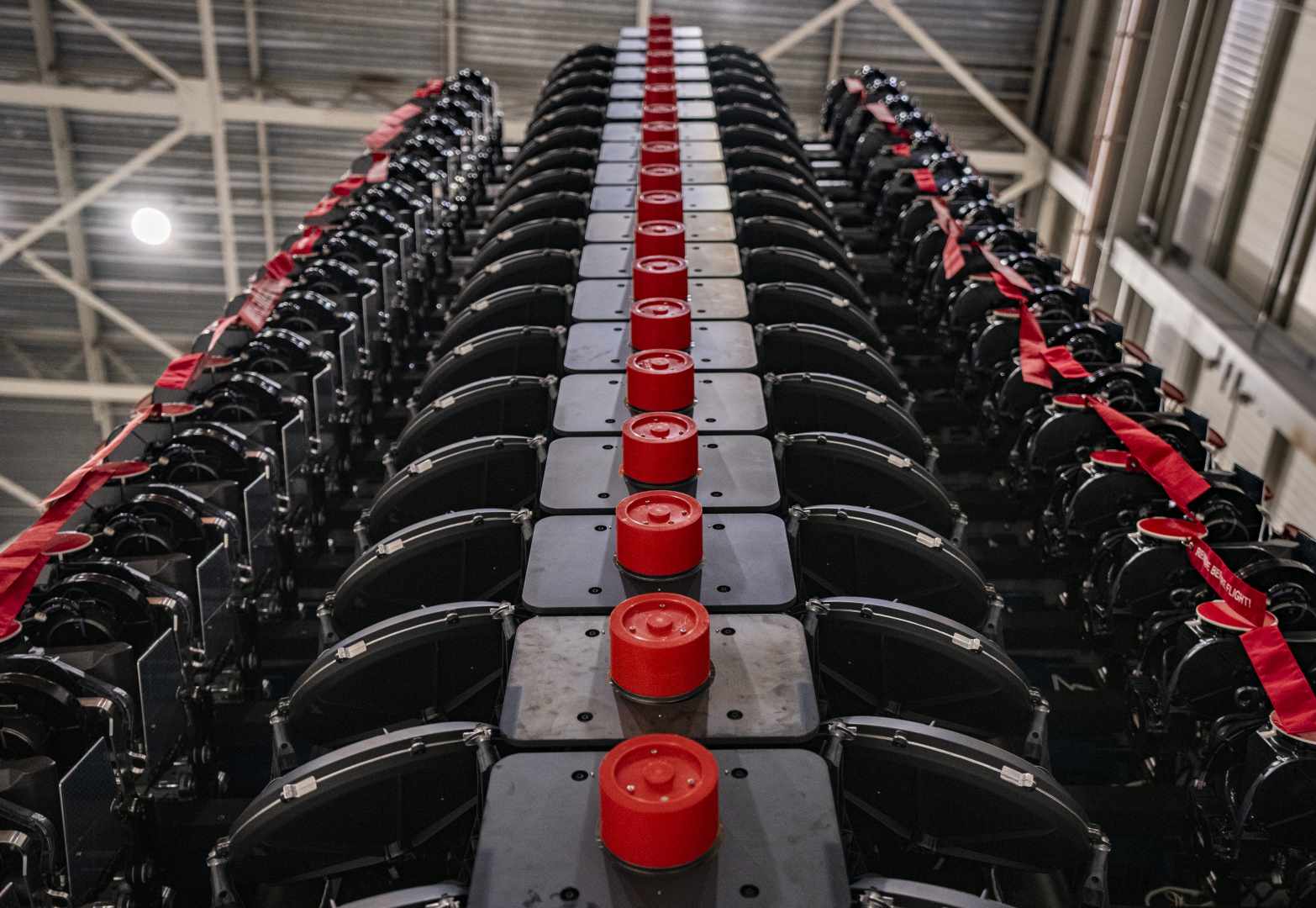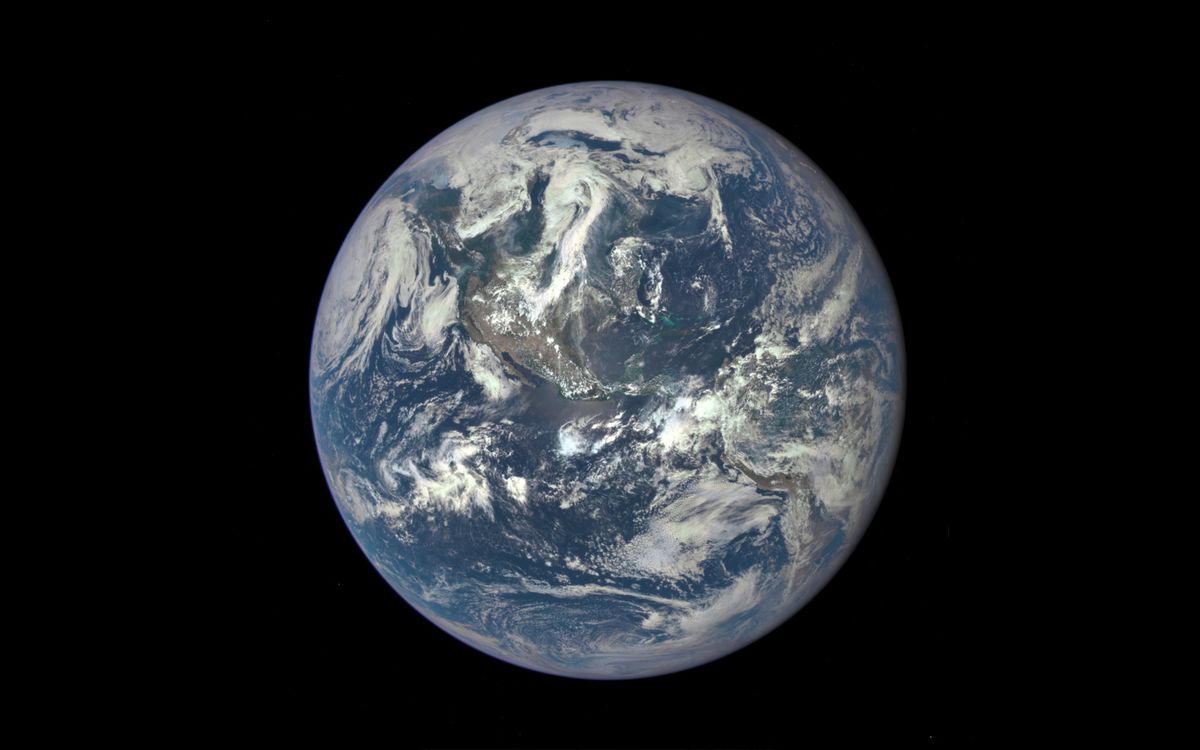
SpaceX has successfully executed its 25th launch of 2024 inside the year’s 11th week, as a record-tying Falcon 9 booster sprang aloft from historic Pad 39A at Florida’s Kennedy Space Center (KSC) two days later than originally planned at 8:21 p.m. EDT Friday. Laden with 23 Starlink internet communications satellites bound for low-Earth orbit, the 19-times-flown B1062 powered smoothly uphill under the thrust of her nine Merlin 1D+ engines, then returned to a pinpoint landing on the Autonomous Spaceport Drone Ship (ASDS), “A Shortfall of Gravitas”, situated offshore in the Atlantic Ocean.


Having previously flown five Falcon 9s in March, as well as Wednesday’s third Integrated Flight Test (IFT-3) of the Starship/Super Heavy stack out of Boca Chica, Texas, last night’s mission marked the first occasion that SpaceX has conducted as many as seven launches inside the opening half of a calendar month. Three Starlink missions, the 53-payload Transporter-10 “rideshare” and a new crew for the International Space Station (ISS) preceded B1062 into orbit over the last two weeks.
And last night’s flight also represents the 25th Falcon flight of the year, an achievement that even in record-setting 2023 SpaceX did not reach until the middle of April. Two years ago, it took the Hawthorne, Calif.-headquartered launch services organization until mid-June to reach 25 flights and only as recently as 2020 did SpaceX pass a quarter-century of missions across an entire calendar year for the first time.


Twenty-five launches in 11 weeks, an impressive cadence that equates to a liftoff every 2.9 days, also smartly surpasses last year’s 3.8-day average which ended on a personal-best-beating 96 missions. Nine flights out of Vandenberg Space Force Base, Calif., the remainder from KSC or neighboring Cape Canaveral Space Force Station in Florida, have now lofted over 350 Starlinks, crewed and uncrewed missions to the ISS, geostationary communications satellites for Sweden and Indonesia, spacecraft to explore Earth’s oceans and climate and the Moon’s potential habitability, a highly classified payload for the U.S. Space Force and the multi-customer Transporter-10 rideshare “stack”.
Those missions have been achieved using 16 Falcon 9 cores, nine of which have flown more than once since the start of the year. In January, SpaceX achieved its first ten-launch calendar month and its first four-launch month out of Vandenberg, recorded its first-ever “Leap Day” mission on 29 February and at the beginning of March flew a pair of Falcon 9 boosters under two hours apart for the first time.


Flying last night’s mission was B1062, the third Falcon 9 to reach a life-leading 19th launch. She follows on the coattails of December’s untimely loss of B1058—the one-time ride of Demo-2 astronauts Doug Hurley and Bob Behnken—after her successful (though ultimately ill-fated) 19th mission and last month’s fully successful launch, oceanic recovery and safe return to shore of B1061.
B1062 entered service back in November 2020, when she lifted the fourth Block III Global Positioning System (GPS III-04) navigation and timing satellite to Medium Earth Orbit (MEO) for the U.S. Space Force, followed by GPS III-05 in June of 2021. And during 2022, she recorded no less than eight missions, the highest ever recorded by a single Falcon 9, notably flying twice in April of that year alone and setting a new empirical record (still unbroken) of only 21 days between flights by the same orbital-class booster.


B1062 is among just a handful of vehicles to have launched two human crews. She flew the historic, all-civilian Inspiration4 crew of Shift4Payments billionaire Jared “Rook” Isaacman, Sian Proctor, Chris Sembroski and Hayley Arceneaux in September 2021 as well as launching Ax-1 astronauts Mike Lopez-Alegria, Larry Connor, Mark Pathy and Eytan Stibbe on the first all-private ISS mission by AxiomSpace, Inc., in April 2022.
Added to those impressive credentials, B1062 has now lifted over 480 Starlinks on 11 missions, together with a pair of geostationary-bound communications satellites—Egypt’s Nilesat-301 in June 2022 and Saudi Arabia’s Arabsat-7B (also known as BADR-8) last May—and 40 broadband satellites for London, England-based OneWeb.


Launch was originally targeted for a four-hour “window” extending from 7:29 p.m. EDT through 11:29 p.m. EDT Wednesday, but the weather outlook hovered only about 60-percent favorable. “On Wednesday, a disturbance will form in the Gulf of Mexico and drag a weak boundary north through Central Florida by nighttime,” noted the 45th Weather Squadron at Patrick Space Force Base in its L-1 weather update, issued Tuesday.
“While convective risks will remain low, mid-level clouds moving through the Spaceport may be some cause for concern for the initial launch window,” it was added. “Therefore, the primary weather concerns for a Wednesday evening launch will be for the Thick Cloud Layer Rule and Cumulus Cloud Rule.” The boundary was expected to clear out northwards by Thursday, with generally excellent weather predicted and only a slight chance of a Cumulus Cloud Rule violation.


Initially postponed deep into Wednesday’s window—firstly to 7:51 p.m. EDT, then to no sooner than 9:25 p.m. EDT—the launch was ultimately scrubbed and teams stood down for a 24-hour recycle. Thursday benefitted from almost four available hours of T-0 points, extending from 7:04 p.m. EDT through 10:40 p.m. EDT.
Fueling of the Falcon 9 with liquid oxygen and a highly refined form of rocket-grade kerosene (known as “RP-1”) got underway at T-35 minutes, but teams stood down due to a ground-side technical problem. “Standing down from today’s launch to allow teams to work through an issue with the transporter erector’s cradle arms,” it was noted. “Vehicle and payload are in good health and teams are resetting for a launch attempt as early as Friday.” Friday’s launch opportunities ran from 6:39 p.m. EDT until 10:39 p.m. EDT.


The third time proved charmed and B1062 rose ponderously from Pad 39A at 8:21 p.m. EDT, powering smoothly uphill and shutting down on time at 2.5 minutes into ascent, before returning to the deck of ASOG for a picture-perfect landing. The Merlin 1D+ Vacuum engine of the Falcon 9’s second stage ignited for a customary six-minute “burn” to push the 23 Starlinks safely into orbit, with deployment about 65 minutes into the flight.
As a network, Starlink enables high-speed and low-latency internet provision to over 70 sovereign nations and international markets in North and South America, Europe, Asia, Oceania and Africa. Landlocked Eswatini—formerly Swaziland—in southern Africa and Honduras and Paraguay joined Starlink in December and SpaceX revealed that network availability was extended to Mongolia in March 2024.


The downsized V2 Mini satellites, first flown in February of last year, boast three to four times greater “usable” bandwidth than earlier Starlink iterations. “V2 Minis include key technologies—such as more powerful phased-array antennas and the use of E-Band for backhaul—which will allow Starlink to provide 4x more capacity per satellite than earlier iterations,” SpaceX explained. “Among other enhancements, V2 Minis are equipped with new argon Hall thrusters for on-orbit maneuvering.”
Florida-based intercity operator Brightline adopted Starlink on its trains in 2023, the first passenger rail service in the world to do so. Additionally, El Salvador’s Ministry of Education has begun integrating Starlink capability into its schools to help close the digital divide between urban and remote rural communities and 50 Rwandan schools are now connected via Starlink’s high-speed internet service.


And in January, SpaceX lofted its first six “Direct-to-Cell” Starlinks, which permit mobile network providers to offer “seamless global access to texting, calling and browsing”, whether “on land, lakes or coastal waters”, without the need to change hardware or firmware. Within six days of that first launch, SpaceX engineers sent and received their first text messages via Direct-to-Cell and as of March Starlink reportedly has about 2.6 million registered subscribers or customers worldwide.







